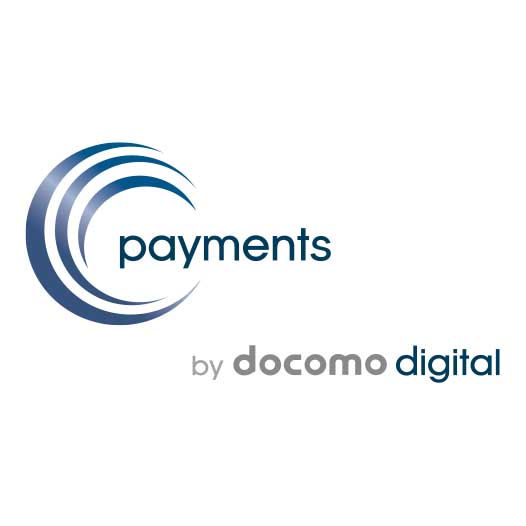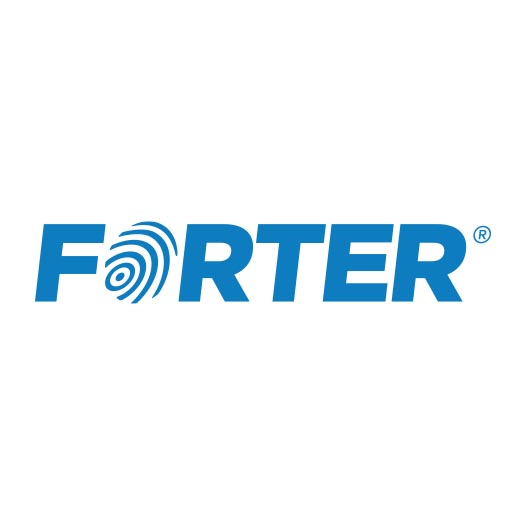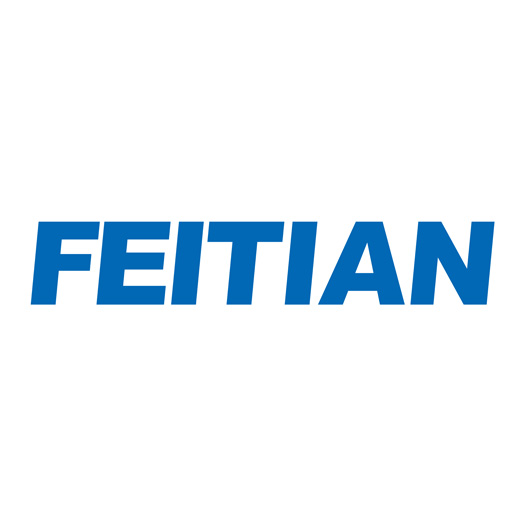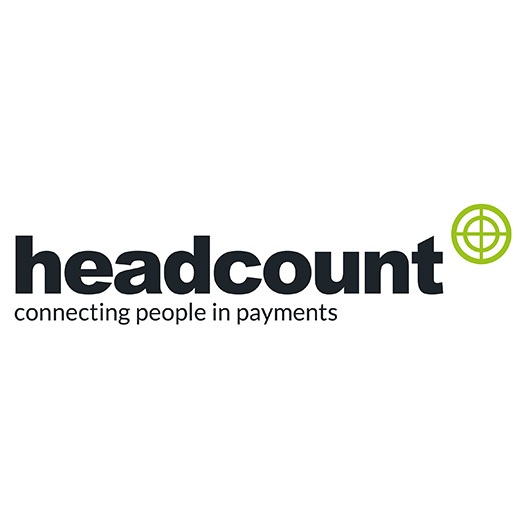750
attendees
100
speakers
220
merchants
28
sponsors & exhibitors
The MPE 2021 Virtual Conference took place on 22-25 February 2021.
The 15th edition of MPE conference experienced a BIG SHIFT from physical to virtual.
A BIG Thank you goes to participants and sponsors for making it a success event in this NEW era of digital events!



































MPE covered the latest technologies, trends & business models of merchant payment acceptance, checkout & conversion, fraud & security and changing customer shopping experience.
SEE COMPLETE LIST OF SPEAKERS2020 was dominated by the Corona pandemic and the associated challenges. The focus now turns to what opportunities will open in 2021. To look to the future, it is helpful to keep in mind the developments of the past years. The opening session of this year's online conference Merchant Payments Ecosystem with Kurt Schmid, Marketing & Innovation Director Secure Digital Payments at Netcetera, was focused on this topic.
The main trends that emerged in the payment industry in the last few years and experienced a major push for- ward in 2020, are contactless, mobile and e-commerce in general. E-commerce is seeing very large growth: for example, in the UK, e-commerce sales grew as much in 2020 alone as it had in the previous five years combined. Contactless has become the standard for cashless pay- ments: Around 80 percent of all card payments are now processed this way. This paves the way for the shift from plastic cards to mobile devices. Smartphones will be established as the new predominant form factor. Con- sumers now prefer to use mobile devices for online shopping; hence this area is experiencing a very strong growth.
These changes in consumer behavior brought about by Corona, in particular regarding the use of contactless technology and e-commerce, are sustainable and will continue even after the pandemic.
Blurring boundaries
The boundaries between e-commerce and brick-and- mortar business are blurring increasingly. Many mar- ket participants expect in-app payments, such as those common with Uber, to grow strongly in stationary stores as well. Starbucks' app is just one example. In a study conducted by Mastercard, in-app payments were rated best in terms of both user-friendliness and the ability to integrate additional services (value-added services).
When it comes to value-added services, both acquirers and most merchants expect digital receipts to replace paper receipts within the next five years. Other services that acquirers and merchants consider likely trends in- clude personalized and instant rewards for purchases made directly at the POS and buy-now-pay-later offers. In the end, the user experience decides what is really used in daily life - i.e. whether consumers find a pay- ment method convenient and secure, and what addi- tional benefits it offers them.
E-commerce businesses of all shapes and sizes will need to tap into local payments infrastructures to grow their cross- border sales in a post-Covid, digital-first economy. The question is: should they buy or build that infrastructure?
Let’s get the most overused statement of 2020 out the way: Covid 19 has changed the world. As far as e-commerce and payments are concerned, shopping online has become the norm – not just in developed countries but also in emerging economies. A global digital economy that had been years in the making arrived at the click of a checkout button.
The changes in shopper behaviour have been so apparent and widespread that to write about them can sometimes feel like pointing out the obvious. It’ll come as no surprise that cross-border e-commerce increased by up to 45% in 2020. But despite the undeniable shift to a global, digital- first global economy, another fact remains: 77% of all online purchases are made using a local payment method.
What are local payment methods? (In case you don’t know...)
Put simply, local payment methods (or “LPMs”) are the most popular payment methods in a particular country or region. Some like to call them “alternative payment methods”. But depending on which country or region you’re in, they are the preferred payment method. Brits and Americans prefer credit cards such as Visa and Mastercard, whereas the Chi- nese adore e-wallets like Alipay. The 77% stat is proof that the way people pay for things online remains local. So if businesses want to win big in the era of borderless e-com- merce, they’ll still need to integrate these methods onto their payment platforms.
It sounds like a simple formula for success: “add more local payment methods, watch your conversions skyrocket”. Un- fortunately, it’s not that easy. Going it alone in a market of unknowns can be complex and costly – even for the world’s biggest payment service providers (PSPs), enterprises, and banks. Let’s say a PSP has a strong offering in the United States and now wants to break into China. It’ll have to forge direct integrations with China’s most-popular LPMs from scratch, whilst navigating the country’s laws, regulations, and banking network. That can take considerable time and resources. Time and resources that PSPs should spend on doing what they do best: building seamless, consumer-cen- tric payment portals for their merchants. There is a solution – and it lies in infrastructure.
As bricks-and-mortar businesses began to digitize ten years ago, the talk of the town was infrastructure. It wasn’t enough to make piecemeal IT improvements. Root-and- branch digital transformation was the goal – and the only way to achieve it was for businesses to pursue an all-in-one infrastructure that met all their needs. The question for busi- nesses was whether to build that infrastructure in-house or outsource it from cloud-computing providers that could do the heavy-lifting for them. Fast forward to 2021, and it’s fair to say that “buy” won, with more and more businesses tap- ping into infrastructures like Amazon Web Services, Micro- soft Azure, and Google Cloud.
Get the LPM experts to do the heavy-lifting
With the pandemic presenting unprecedented opportuni- ties for global growth, e-commerce has reached its build- or buy moment. Building a local payments infrastructure in-house is possible, but it’s not easy. Adding a single lo- cal payment method can take up to 6 to 12 months. Once the LPM is up and running, it could end up costing over $1 million in integration and maintenance costs for one year alone. And there are plenty of operational complexities to think about, from managing the entire payments cycle to navigating local laws and regulations.
For merchants with little payments expertise, building in- frastructure may be too big a burden to bear. And while larger PSPs and banks may have the financial muscle to ac- quire LPMs at will, they’ll still encounter many time-sapping distractions that come with assembling, building, and man- aging an LPM offering from scratch.
On the flip side, buying (or outsourcing) a pre-existing infra- structure could help businesses integrate LPMs at a greater pace, which in turn could see them break into markets faster. If companies are thinking of going down the “buy” route, they’ll need to look for an infrastructure that does three things:
1. It should offer deep integrations with the world’s best local payments methods.
2. It should manage the end-to-end flow of funds for each LPM, taking care of all the technical, legislative, and financial nuts and bolts.
3. And the infrastructure as a whole should be easy to integrate through a few simple APIs.
By investing in infrastructure like this, businesses could rest easy knowing that they’d be leaving the heavy-lifting to the experts.
Some of the biggest PSPs, banks, and merchants have al- ready chosen to buy their local payments infrastructure to boost their post-Covid conversion rates. Those that don’t are likely to spend a great deal of time and expense trying to go it alone.
This week we had the pleasure to listen and participate in several discussions at the Merchant Payments Eco- system 2021 virtual event where we can strongly say PSD2, SCA and 3D Secure 2 (3DS2) have been, as expect- ed, the most discussed hot topics in many panels from both merchants and payment service providers/ vendor sides. As we are now in the middle of the SCA transition journey, we have decided to write down a couple of our recommendations, for merchants and payment service providers, on what we see necessary to be done in 2021 to tackle the SCA challenge in the most convenient and frictionless way for the end-users.
National Competent Authorities PSD2 enforcement plans
For many countries within the European Economic Area (EEA), Strong Customer authentication requirements are already fully mandated, independently from transaction amount thresholds. Be sure that you stay informed and up to date, keeping an eye on the various soft-decline transition plans in 2021 fro Strong Custom- er Authentication.
You can take a look to the full enforcement list on our previous blog article about it.
SCA and 3D Secure 2 Performances are im- proving, but still much needs to be done.
We have seen that the volume of 3DS2 transactions has nearly doubled compared to the end of 2020, with the majority of merchants very closed to full PSD2 requirements com- pliance for specific use cases such as Merchant Initiated Transactions (MITs). Nevertheless, issuer performances have been different in January, and we have seen some technical issues which are being/ will be tackled as soon as possible by the different providers within the payment chain. Some errors are purely related to in- correct flagging on the authorization level ( Incorrect SCA exemption or exclusion flag or missing Directory Server Transaction ID) while others are related to the authenti- cation phase ( incorrect characters, mer- chants sending not accurate 3DS2 fields, issuers having issues while authenticating customers in mobile app environments).
Smart logics as key for 2021 SCA success
Payment Service Providers and Vendors such as Risk Management Providers have an enormous role in offering to merchants solutions ad- vanced features to leverage data intelligence and opti- mizing conversion rates within this transition phase. If the new 3DS2 data and issuers behaviour are utilized in the best way, merchants can minimize abandonment and friction caused by a non fully yet perfect 3DS2 solution.
We know that very few merchants in the market can build advanced engines fully on their own, that’s why we say: PSPs/Vendors should build SCA Smart engine prod- ucts – Merchants should decide their SCA 2021 strategies based on those.
If you are a PSP/ vendor needing support with offering an advanced SCA Smart En- gine solution to your merchants, let’s have a chat about it.
Is SCA Delegated Authentication a good fit for your business?
The PSD2 RTS (Regulatory Technical Stan- dards) require transactions in the scope of the regulation to be authentication with SCA (Strong Customer Authentication). The answer from the payment industry has been upgrading the old 3DS1 protocol into a new and more advanced 3D Secure 2 (3DS2.1 & 3DS 2.2) solution focused on a way better customer experience, where issuers will authenticate their cardholder following the SCA requirements. Be- ing the quickest solution to achieved PSD2 Com- pliance, this will be surely one of the most com- mon ways to authenticate customers.
But let’s not forget that there is the possibility to move the SCA authentication step from issuers to merchants, leveraging SCA Delegated Authenti- cation possibilities.
For some businesses, Delegated Authentication can be a very attractive solution with visible benefits in keeping the SCA authentication within the mer- chant ecosystem ensuring higher authentication rates and a smoother customer journey. Even though we are in the early phases with Delegated Authentication, we strongly recommend to be fully familiar with this solution and to make a decision about including it into your 2021 SCA roadmap.
If you want to learn more about delegated au- thentication take a look at one of our previous blog posts about it or let’s schedule a chat. This is now becoming a daily topic in our discussions with merchants and Payment Service Providers.
2021 is the “SCA year” for the payments industry, a historical milestone in setting up new security standards for the European continent. Be sure to get the best out of it turning it into a business opportunity!
2 Session 2: Tackling SCA, fraud and building TRUST
SCA in ecommerce was, rightly, the top topic at MPE21- Virtual. As one of the strongest advocates of a market-led approach to tackle this potentially economy-threatening piece of legislation, I’ve supported the sharing of infor- mation and the active lobbying on regulators across Eu- rope for almost five years. So, almost two months after the regulation was due to be enforced across the EEA and with most National Competent National Authorities sensibly providing a welcome period of grace to issuers, I was delighted to be chairing this session at MPE. It pro- vided the ideal time to look at the reality of the situation and bring some practical insight to all involved as we ap- proach the end of the tortuous SCA journey.
This session with Ekata, Payment Universe, Glovo and Barclaycard provided an interactive opportunity for the European merchant payments ecosystem to get insights drawn from the seven weeks since the beginning of the EEA enforcement period in keynote presentations from two leading companies, and to look at the practical steps that could be taken as the merchant community tries to apply real-world operational and consumer-centric ap- proaches to making SCA work for their businesses.
One of the areas we explored was the dilemma for card issuers and merchants alike in what was described as the ‘race to be last’ or, as Spencer from Ekata more accurately represented it, ‘the race to not be first’. This results from the conflicting priorities that particularly issuers have when thinking about ramping up their transaction chal- lenges/declines. The citizen/consumer who is making the transaction is not only a merchant’s customer whose experience has to be optimised, but is also a cardholder/ customer of the bank who can much more easily take their banking business elsewhere than they can switch their merchant allegiance! The ease with which the card- holder can switch their banking and payments business elsewhere, together with the need to create a frictionless experience for the cardholder, is mutually exclusive to the need to be ultra-cautious when authenticating transac- tions in order for banks to keep their reported fraud levels within the thresholds set for the Transaction Risk Analysis exemption. The race to not be first is an obvious outcome of the need to keep friction out of the process. The alter- native is to deploy solutions from the many solutions that payments solutions providers are queuing up to offer to merchants in the coming months.
The conclusion was that the sky hadn’t fallen in during the first seven weeks of the year, mainly due to the defer- ment of enforcement by National Competent Authorities and the hard work of a wide range of payment solutions providers. The real test will be when Europe’s larger card markets start to enforce from mid-March.
3 Breakout Room 1: 3DS/SCA/Delegated Authen- tication
In another SCA feature at MPE21-Virtual, the interactive opportunities for the wide-ranging audience reached new heights in a breakout session with Checkout.com, Nets and Ekata. This offered the opportunity for audience participation – not only to ask questions but to share their views and experiences live on camera. There were such a broad range of questions, with the number one issue being many merchants’ inability to correctly process ‘soft declines’ and the need to shift the focus to reducing false positives at issuers. The over-riding conclusion was that as much data as possible should be shared with issuers and this in turn necessitated a more joined-up approach with better testing across the merchant-gateway-acquir- er-issuer data flows.
Delegated Authentication hasn’t been a major topic in many previous conferences and seminars but is starting to come to the fore as the realisation dawns that many merchants know much, much more about their consumer customers than banks know about their cardholders and can therefore provide much greater levels of assurance in authenticating transactions. This does however mean that merchants need to maintain their investment in fraud detection and KYC solutions and play their part in the overall maintenance of low levels of fraud.
This was a pragmatic breakout that looked at SCA from the perspective of everyone working together to over- come the inadequacies of the regulation when address- ing real-world, business continuity issues as opposed to purely from a technical, regulatory compliance view- point. This gave delegates a clear set of next steps to go away with and apply in their businesses.
4 Merchant Breakout 3: 3DS/SCA
This merchant-only breakour/workshop with Forter, FreedomPay and Mastercard saw the highest level of in- teraction of any session I chaired at MPE-Virtual. In a ses- sion which explored some of the statistics since the EBA’s intended enforcement cliff edge at the beginning of 2021, the levels of increased basket abandonment, transaction failures and overall lack of issuer readiness were revealed. The need for increased level of investment in fraud de- tection solutions at merchants – and across the merchant payments ecosystem in general – was emphasised. This will be particularly important if merchants are to make a positive contribution to fraud levels and the ability of acquirers and issuers to process transactions under the Transaction Risk Analysis exemption. The importance of working with payment gateways who are investing in SCA compliant solutions and moving rapidly from 3DSe- curev1 to EMV3DSv2.1 and onwards to v2.2 as soon as possible was a strong message from this breakout.
One slightly left-field, but entirely valid, suggestion was that since there has been a higher than expected level of latency in processing 3DS transactions, merchants could leverage the ‘outage exemptions’ and seek authorisation of transactions without full SCA being performed. Hope- fully by the time we’re seeing most National Competent Authorities applying the full enforcement criteria, the technical challenges and less than robust, boot-strapped infrastructure will have improved. It was clear from this session that helping Europe’s pandemic battle-scarred merchants to extend their ecommerce capabilities is the goal of the payment processors, gateways, fraud detec- tion and identity solutions providers who are working so hard to support them on their SCA journey.
The session of ‘E-commerce payment strategies 2021’ covered a range of different aspects reflecting the differ- ent facets that any strategy development would need to consider. The two keynote presentations were very dif- ferent in nature. Firstly, Rapyd addressed the challenges that come with the growing volume in crossborder ecom- merce activity which is seen by 87% of global ecommerce leaders as critical to their business. Recognising why con- sumers buy internationally and what the implications are for merchants (quick delivery, easy checkout, convenient / local payment methods) were covered as well as the growing relevance of B2B in ecommerce. Understand- ing all those complexities and drawing the right strategic conclusions is key.
The second keynote presentation was from SWIFT, an established stakeholder in the payments industry that is arguably better known for providing infrastructure, stan- dardised processes and message flows across the globe but less so for a prominent role in e-commerce payments. SWIFT very clearly laid out its path from a point-to-point messaging set-up to SWIFT gpi that enables faster pay- ments with full tracking and transparency. The next stage of the strategic evolution is to move more into the low- value payment space which has its own challenges and end-user expectations.
During the subsequent roundtable discussion, the role of technology and innovation and the impact on payment strategies was explored. It was fully acknowledged that we are going through times of unprecedented change and technology is changing so rapidly that it provides great opportunities on the one hand but creates chal- lenges on the other. Whether it is in-app payments, cryp- to or even just account-to-account transfers in realtime, the main conclusion from the session was that despite all those changes, the user or customer experience has to re- main the focus of attention. Any payment strategy needs to consider how the user experience is being impacted and if this experience would not meet consumer’s expec- tations, even the best technology will not succeed.
With steep digital commerce growth projected across the globe, there has never been a better time to expand digital commerce. Increased global inter- net connectivity, combined with expanding logistics net- works and an ongoing trend towards digital commerce make cross-border sales growth an important objective for companies of all sizes.
To reach and engage with consumers in overseas mar- kets, merchants rank checkout experience and offering the right payment methods among the most important factors. However, 65% of merchants don’t feel prepared to handle cross-border payments. (Visa)
Defining the Cross-Border Opportunity
• Global cross-border shopping will account for 17% of ecommerce by 2023, with sales valued at $736 billion globally. (Forrester)
Four billion people around the world have internet access (Statista) and 3.5 billion of them are online for an average of six and a half hours every day (We Are Social Inc.).
• Almost 88% of merchants recognize cross-border sales as a fundamental component of long-term success. (Visa)
Why Customers Buy Cross Border
Customers have an ever-increasing number of options when it comes to making online purchases from domes- tic and cross-border sites. Availability and price are pri- mary criteria for making a decision to purchase from any retailer, but there are a number of other factors that in- fluence the decision to purchase from international sites. Knowing what influences customers’ buying decisions can drive sales in any market.
Optimize User Experi- ence with Preferred Payment Methods
Offering easy checkout with preferred payment methods is absolutely critical to driving conver- sions with cross-border buyers. Offering custom- ers limited choices or not accounting for local pref- erences, are common mistakes.
Although some credit cards and ewallets allow customers to make international purchases, this does not mean that they will be willing or comfortable using these to pay a merchant in another country. To reach the majority of global consumers, busi- nesses need to offer locally preferred payment methods in every country where they do business. These methods can vary significantly by country and region – from eWal- lets like AliPay and GrabPay in Southeast Asia to cash pay- ment methods like Boleto in Brazil to Simple Payments in South Korea.
Benefits of Localizing Payments for Cross-Border Transactions
• Higher conversion rates and lower cart abandon- ment
• Better ability to compete against local merchants
• Improved consumer adoption, loyalty and trust
How Can Businesses Simplify Cross-Border Payments?
Payments are a critical aspect of successfully growing online sales internationally. Yet, managing multiple pay- ment method integrations, foreign exchange and compli- ance is too complex and time-consuming for merchants to scale quickly and profitably.
Instead, merchants need to leverage Fintech as a Service solutions that provide a single integration to the right payment methods across multiple markets and layer on benefits like fraud protection, efficient foreign exchange and single currency settlement.
Modern Fintech as a Service solutions offer many ways for merchants to integrate, from APIs to hosted check- out pages and pre-built plugins for popular ecommerce platforms like Magento, Shopify, Wix and WooCommerce. With so many ways to integrate local payment methods at global scale, there’s never been a better time for mer- chants to start growing their businesses cross-border.
Use the Checkout Checklist When Evaluating a Solution
When evaluating service providers merchants need to make sure they implement a solution that meets their needs and the needs of local consumers. Rapyd’s check- out checklist was designed to make sure your checkout and payment experience will be optimized for cross-bor- der success.
Checkout Checklist
Relevant to the Consumer
• Localized: Local payment methods displayed for
each buyer
• Attuned: Up-to-date with new options
• Dynamic: Price displayed in local currency
Efficient for Your Business
• Optimized: Consistent branded experience
• Robust: Integration through APIs and SDKs
• Simple: One reconciliation file, one bank settlement
RISE IN IDENTITY FRAUD WORLDWIDE:
A recent study by Javelin Strategy points to fraud losses doubling from 2019 numbers to over $31 billion USD in 20221. What has been particularly notable over the past several years is that not only are fraud attacks on the rise, but the complexity of the attacks continues to grow. This trend, which has been very challenging for online mer- chants to address, continues today, more than a decade later.
For the past 5-6 years, Accertify’s clients have been re- porting very complex attacks, most commonly Account Takeover fraud, where a criminal hides behind the good reputation of an existing customer to commit fraud. Jav- elin reported last year that account takeover attempts were up 72% in just one year1!
COMPROMISED PASSWORDS & STOLEN CREDENTIALS:
Behind many of these complex attacks is the wide avail- ability of stolen consumer information, coupled with poor password ‘hygiene’.
Password management software company LastPass shared concerning numbers about password reuse: 91% of consumers understood that reusing passwords wasn’t ideal, but even then, two-thirds used the same passwords and 47% of respondents indicated that they reused pass- words between work and personal accounts2.
Stolen credentials are widely available on the dark web and inexpensive. Prices can vary depending on the nature of the data, but data dumps of millions of credentials can be purchased for only a few dollars. With computers be- ing able to test up to 100 million passwords per second3, this stolen consumer information can offer fraudsters a quick and easy way to make money.
ACCERTIFY LAUNCHES DIGITAL IDENTITY SOLUTION (ADI):
The complexity of these Account Takeover attacks dem- onstrated the need for an end-to-end solution to help merchants tackle this problem – in February 2020, Accer- tify launched Accertify Digital Identity (ADI): ADI analyses billions of data points using machine learning, advanced behavioral analytics and device intelligence technology to calculate a trust score and associated reason codes for account activity in real-time to help prevent fraud loss. This solution leverages the power of the Accertify net- work to identify trusted attributes so organizations can confidently confirm new accounts, while also mitigating or flagging potential risks. It also provides ongoing moni- toring of customer accounts to identify unusual activity,
such as successive account updates and automated bot attacks.
BUILT ON 5 PILLARS OF TRUST:
Utilizing the latest machine learning models with the experience and insights that American Express are able to share with us, ADI is built upon “5 Pillars” to enable a merchant to know whether a specific interaction on their website is risky or trusting. The main ethos of the platform is to give real-time insight, without increasing friction or impacting the customer user experience on the merchant platform.
The 5 Pillars of Trust:
1. Device: In addition to traditional device fingerprinting, there are hundreds of signals we can collect about a de- vice and how it is being used. We can ask questions like “Has the phone ever made a call?”; “Is there any malware installed?”; “Is the battery always charged?”; “Is the phone lying perfectly flat?” – how trusting are the interactions with the device?
2. Connection: You can create a virtual picture on how an individual connects to a website. What are the Internet Service Providers (ISPs) they use? What mobile provider do they use? Does the traffic appear to be coming from a hosted data center? Is the user attempting to mask their IP address, or come through a proxy? Looking for incon- sistencies in consumer connectivity behavior is extremely predictive, especially in combination with other IP/ISP data.
3. Location: There are a variety of options for collecting location data, with varying degrees of accuracy (IP loca- tion, HTML5 location, mobile data), but more broadly, as- sessing whether or not this location ‘makes sense’ for the current user can offer predictive insights. The majority of users tend to remain in a relatively small geographic area for their online interactions, and careful observation and analysis here is key.
4. Behavior: User Behavior Analytics measures how a user interacts with a site or a mobile app and is a key method of measuring the trustworthiness of a user. Each person interacts with their keyboard and mouse differ- ently which is why this data is impossible to spoof. The same applies for how they swipe on a screen. We also ana- lyze insights like typing cadence – the speed and rhythm with which a user enters data like their email address or phone number. The ADI models can look at the order in which a person or script fills out fields (good users type in a systematic top to bottom flow; fraudsters jump from field to field depending on how the info is formatted on the file they’ve have purchased with stolen data). For example, we can recognize bots or automated scripts – this can be seen in places where mouse ‘sinuosity’ is 1.000 – the movements are in perfectly straight lines. On top of standard automated attack detection, we also measure a user’s behavioral signals so we can recognize when it is them coming back instead of an imposter.
5. Community: The final pillar is community, and it is one of the keys to how our product sets itself apart from competitive offerings: Operating for over 13 years, Accer- tify now secures over $1 trillion of transactions annually; protecting 40% of the world’s largest e-commerce com- panies and 6 of the largest global airlines. Our technology and consortium data also include top US and EU banks. Being able to leverage the insights from these large com- panies, enables us to offer predictive analysis of data.
SUMMARY:
Fraud attacks and their sophistication continue to evolve.
To stay ahead, we need to evolve our detection and pre- vention techniques. Careful observation of our custom- er’s accounts, as well as a holistic assessment of notewor- thy interactions are key. The techniques described in this presentation offer additional tools to assist in protecting your company’s bottom line, your customers and corpo- rate reputation.
It can be a daunting time in our industry, but the appli- cation of these tools, and more importantly, the combi- nation of these tools can really empower you to identify many of today’s complex fraud attacks.
It has been a year since the COVID-19 pandemic began, and the end is in sight: as of time of writing, vaccinations are be- ing rapidly rolled out and there is a roadmap for when things will be back to some resemblance of normality. That does not mean that all businesses should think of 2020 and 2021 as a bad memory and move on. It is time to think and reflect upon how you have adapted and will now deal with a so- cially distanced retail ecosystem in a post-pandemic world. Those retail businesses still able to operate during lockdown, such as pharmacies and grocery stores, have gone increas- ingly cashless with little to no problem and as the use of cash has understandably reduced. When we look at the evolution of payments, both on and offline, we can see a clear trajec- tory towards potentially a retail environment without paper money and coins: from the launch of the first chip cards in 1974 to PayPal's launch in 2000, through to the introduction of Chip and PIN cards in 2003 and the first contactless cards in 2007, right up to Apple Pay's introduction in 2014.
We have seen how when given the option customers are increasingly choosing to use contactless cards: 46% of credit card payments and 64% of debit card transactions in the UK were contactless in September 2020). In Italy, contact- less payments in the first half of 2020 totalled €31.4 billion, up 15% on the same period in 2019. In France contactless payments in the second half of 2020, the height of the pan- demic, grew by 128%, representing 63% of all transactions. Everything has tended towards reducing 'friction' while tak- ing the burden of ensuring payment security away from consumers and retailers.
Friction at the Checkout
What do we mean by friction? It can be anything that adds an extra step or slows down the shopping experience. Even an act as simple as taking your wallet out of your pocket is friction, hence why Amazon is trailing a supermarket that takes payments automatically when you walk out of the door. The payment experience can be a chance to wow or dismay the customer. It is the ‘moment of truth'. It is when the customer fully commits to buying something, and the less smooth the experience and the more friction the higher the chances that the customer will not return, possibly for ever.
But contactless payments are the tip of the iceberg when it comes to how retailers can create payment experiences that are more dynamic, engaging and safer. For example, in an Apple store, each employee is empowered to take pay- ments wherever they are in the store – if they are helping a customer who has made the decision to buy, they will not need to tell them to join a queue at the tills to pay, they can take a payment on their mobile devices at arguably what is the most convenient and safest point.
This lack of friction has a direct financial impact. Just as im- portantly, this system encourages staff to see themselves as concierges rather than shop assistants, able to take a cus- tomer through their journey from start to finish and build rapport along the way. Because they do not have to sit on checkouts waiting for customers to come to them, they can be proactive around the store. The result is more employee engagement and satisfaction. In fact, recent research shows that one in three customers will abandon a brand after just one bad experience, and 92% will do so after two or three, and potentially forever. 86% of shoppers are willing to pay more for a great customer experience. Cashless has a key part to play in delivering a fuss free and simple shopping experience.
From Physical to Digital
This crossover from digital to physical is something we will see more of as we enter a post-pandemic world. This pres- ents a challenge to data-led retailers: how can you know if a customer started their journey online, became interested in a product through digital channels, then came to a store to purchase? Or perhaps the opposite is true: many people will browse items in-store, think a purchase over and then buy online. Without this data, it can be hard to see what is and what is not effective. You also cannot diagnose if there are points in the customer journey where potential customers are dropping out.
As such, there are now tokenisation systems developed that allow retailers to track a customer's journey on and of- fline and generate actionable insights regardless of which channel a customer uses. This clearly has use cases in mar- keting: companies can track customer behaviour, assess the performance of different channels or brands and create targeted marketing campaigns. For example, if a particular store in a chain is running a promotion that is not available online emails could be sent to customers that you know have shopped there before or even those who are nearby. Tokenisation also allows cross-channel use cases to be put in place in a seamless way. Transactions can be monitored and refunds can be processed online and off, while other customer-focused processes like Click and Collect enabled.
Retail After COVID
We are all familiar with self-service checkouts, and their use has only increased during the pandemic, but we are begin- ning to see stores in China that are 100% self-service, and although in Europe we are a little behind, we are used to paying for fuel, train tickets or parking without any human interaction. At Worldline we are also seeing interest around Scan and Pay: shoppers using their own mobile devices to scan items as they shop then being able to choose between one-click payments or going to a checkout if they prefer.
Lastly, loyalty programs are also showing signs of evolving as they strive to become much more convenient and fuss free. Today, you might have a wallet bulging with multiple cards or a phone filled with apps even though when paying for your goods all you need to do is tap your phone or card. A two-tap system where you can tap one card for points and one for payment is already in place in many places, but sin- gle-tap payment solutions may be possible where a mobile device can pay and add points at the same time.
It remains to be seen how the collective experience of CO- VID-19 will change consumer and retailer behaviour in the long term, but the changes will be significant and we can be assured that contactless payments are here to stay (es- pecially since payment limits are to increase). This and the blending of digital and physical spaces will allow for faster, more dynamic payments that fit around a customer's needs. The result will be a shopping experience that is richer, more satisfying and more social than we have ever experienced.
Our panel members provided their view on the current trends in the payments space, as well as the impact of the pandemic. The panel was organized around four key questions, and a summary of the discussion can be found here below:
Question 1: The pandemic has accelerated the shift towards digital channels. What are the key challenges that merchants are facing as a result of this shift, and how do payment companies help to navigate these challenges?
• As Frederic Mazurier wittingly remarked, COVID19 has made the future happen much faster. Changes in behavior that could have taken decades happened within a couple of months. Trends that were already happening, such as the shift to digital com- merce, and omnichannel delivery, became a ne- cessity during the lockdowns in 2020. This change is now irreversible, even if things return to normal later in 2021.
• COVID19 has confirmed the resiliency of payments as a value generating activity. Software providers (ISVs) have helped retailers to manage the crisis and become more omnichannel.
• Lots of innovation has happened to enable small businesses to go online and become contact free e.g., by using QR codes. Its an opportunity for the payments providers to offer easy-to-implement, simple but secure solutions to SMBs.
Question 2: Payments are becoming increasingly digi- tal and contact free. What are the key payment trends that you see emerge in the coming year?
• Innovation in payment methods including open payments (using PIS), BNPL, and QR code payments is offering more customer choice. The use of wallets such as ApplePay and GooglePay is accelerating.
• The enforcement of SCA from January 1, 2021 does not mean that the market is ready. The different country implementation plans and issues with mer- chant and issuer readiness will require a long transi- tion period during 2021, as all the actors in the eco- system need to work together seamlessly.
• The coming year will be critical for the development of the European Payments Initiative (EPI) to orga- nize the proper governance and create the appro- priate use cases for merchants.
• The challenge is still how to change customer be- havior to adopt new payments methods. The user experience is essential, together with incentives such as loyalty to stimulate new payment method adoption.
Question 3: Thanks to COVID-19 and the shift towards digital channels, it has never been more important to choose your customers wisely and to understand the composition of your customer portfolio. How can pay- ment companies use customer insights to better ac- quire, retain and develop customers?
• "Know your data": two-thirds of the buying journey now happens online. This provides an enormous footprint of customer data to analyze and derive value from. Merchants are looking to advanced analytics and segmentation techniques to deeply understand the customer base, develop value prop- ositions based on how customers buy and use tech- niques like machine-learning to effectively cross- sell/up-sell and prevent churn.
• Merchants and their providers should provide cus- tomers with the ability to interact in the way they want e.g., though voice interaction.
• Providers should give customers what they need e.g. bundled pricing, value-added services, inside- sales, customer success managers.
Question 4: How will the competitive landscape de- velop in the near future?
• There is tremendous M&A activity that generates huge capital to drive innovation and consolidation. At the same time the valuations make it difficult to create value from M&A in the future.
• Global “category killers” such as Stripe, Adyen, Pay- Pal, SumUp are fierce competitors and they will challenge incumbents that are more local and may not be able to manage the speed and complexity of payments transformation going forward.
• Those companies that can leverage technology to offer their customers a personalized and seamless digital experience will be winners in the increasingly competitive payments landscape.
MPE 2021 event coverage by MPs, speakers, award winners

The MPE 2021 AWARDS VIRTUAL CEREMONY was a part of the 14th annual MPE 2021 (Merchant Payments Ecosystem) VIRTUAL conference, February 22-25.
We found this event highly successful and have been very pleased with the results. Thank you for organising such a valuable event. We were very pleased to sponsor once again

Fiona Wijngaards
Director of Sales, EMEA
Ekata
Thank you for an outstanding event!!! This was really perfectly organized from every point of view, everyone at Accertify loved it and complimented you and the team.

Irina Tileva
Marketing EMEA
Accertify
My congratulations to you for the smooth transition from the ‘normal’ physical Awards to the Virtual experience these last few days. The production was excellent and Neira did a great job. The conference seems to have gone well when I have been online and I hope that is the case.

Roger Alexander
NED
Valitor
Congrats for hosting and running the virtual event. I thought the event was great, with quality discussions and strong technology base. Well done.

Volker Schloenvoigt
Principal
Edgar, Dunn & Company
Every year MPE is even better & better, it is one of a kind event which provides the top industry insights. I have been part of MPE for 4 years now and every year, I find at least one new potential payment partner for our platform.

Faheem Bakshi
Head of Payments
Kinguin